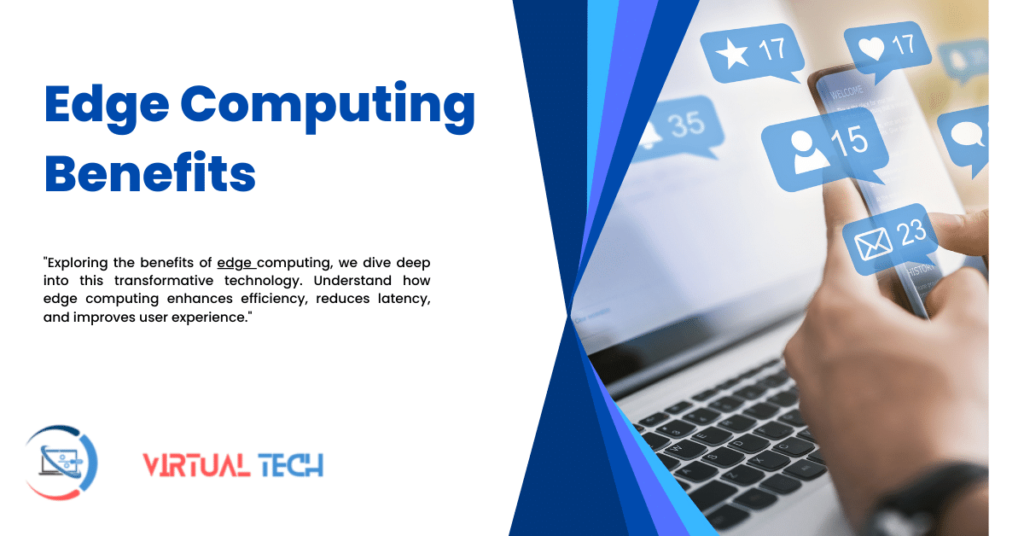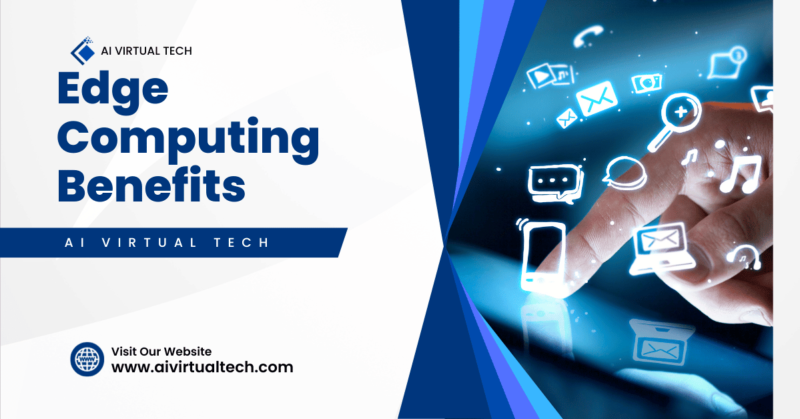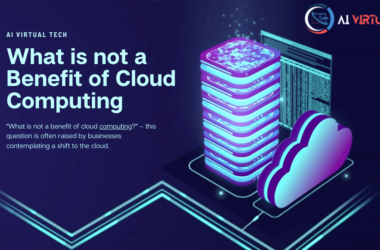“Exploring the benefits of edge computing, we dive deep into this transformative technology. Understand how edge computing enhances efficiency, reduces latency, and improves user experience.”
Edge Computing – An Overview
Edge computing is a revolutionary technology that brings computation and data storage closer to the location where it’s needed.
This technology enhances response times and saves bandwidth. As we continue to embrace digital transformation, understanding the benefits of edge computing is crucial.
Edge computing increases the efficiency of data processing. By processing data near its source, it eliminates the need for long-distance communications with the cloud or a data center. This, in turn, reduces costs and time delays.
With edge computing, data doesn’t necessarily need to travel over the network, reducing the exposure to potential hackers and data breaches. This makes edge computing a more secure option for sensitive data.
Benefits of Edge Computing
- Faster response times: With edge computing, data is processed and stored closer to the source, resulting in faster response times and better user experience.
- Improved efficiency: As mentioned earlier, edge computing eliminates the need for long-distance communication with the cloud or data center, increasing overall efficiency and reducing costs.
- Reduced latency: By processing data closer to the source, edge computing significantly reduces the time delay in data transmission.
- Increased reliability: Edge computing operates on a distributed network, making it less prone to single point failures. This increases reliability and minimizes downtime.
- Enhanced scalability: With edge computing, resources can be easily scaled up or down based on demand, making it highly adaptable for dynamic workloads.
- Cost-effective: By reducing the need for expensive cloud or data center resources, edge computing can significantly reduce costs and provide a more cost-effective solution for businesses.
- Flexibility: Edge computing allows for flexibility in data processing, storage, and analysis, making it suitable for a variety of use cases and industries.
- Improved user experience: With faster response times and reduced latency, edge computing can greatly enhance the user experience, especially for applications that require real-time or low-latency processing.
- Future-proofing: As the volume of data continues to grow and IoT devices become more prevalent, edge computing is becoming increasingly necessary. By adopting this technology, businesses can future-proof their operations and stay ahead of the curve.
- Integration with cloud computing: Edge computing complements cloud computing by offloading processing tasks to the edge but still utilizing the scalability and storage capabilities of the cloud when needed.
Applications of Edge Computing
Edge computing finds its applications in diverse sectors owing to its myriad benefits. Industries ranging from healthcare to manufacturing and from transport to retail are leveraging this technology for optimized operations and elevated outcomes. Some of the common applications of edge computing are:
- Internet of Things (IoT): With the rise of IoT devices and their constant need for real-time data processing, edge computing provides a viable solution to handle the massive amounts of data generated by these devices.
- Smart cities: Edge computing can be used in smart city infrastructure such as traffic management systems, energy grids, and public safety networks to improve efficiency and response times.
- Healthcare: Edge computing enables real-time monitoring and analysis of patient data, allowing for quicker diagnosis and treatment decisions, as well as remote patient monitoring.
- Manufacturing: By utilizing edge computing, manufacturing facilities can optimize their production processes, reduce downtime, and improve quality control through real-time data analysis.
- Retail: Edge computing can be utilized in retail stores to improve inventory management, personalize customer experiences, and optimize supply chain logistics.
- Autonomous vehicles: The use of edge computing in autonomous vehicles allows for real-time decision making and response to changing road conditions for enhanced safety.
Challenges and Future Opportunities
While edge computing offers numerous benefits, there are also challenges that come with implementing this technology. These include maintaining security and privacy of data, interoperability with existing systems, and managing the large number of edge devices.
However, as technology continues to advance, edge computing is expected to play an even larger role in various industries.
With the rise of 5G networks, there will be increased connectivity and faster transmission of data between edge devices and centralized cloud systems.
This will allow for more complex and real-time applications to be deployed on the edge, further enhancing its capabilities.
With the rise of Internet of Things (IoT) devices, there will be an exponential increase in the amount of data being generated at the edge.
Edge computing will play a crucial role in processing and analyzing this data in real-time, enabling faster decision making and response times.
Edge computing also opens up new opportunities for businesses to innovate and improve their processes. For example, with the use of edge computing in manufacturing facilities, there is potential for predictive maintenance of equipment and real-time quality control measures.

Reducing Latency
A prime benefit of edge computing is its ability to reduce latency in network communications. As devices generate data, sending this data to the cloud and back for processing can lead to delays.
With the advent of edge computing, data processing happens closer to the source, significantly reducing these latencies.
As applications become more sophisticated, the need for real-time data processing becomes critical.
Edge computing offers a solution to this, with latency times often reduced to a mere fraction of a second. This can be a game-changer in industries such as healthcare, gaming, and telecommunications.
However, it’s not just about speed. Reduced latency also translates to improved user experience.
As edge computing minimizes delays, users can enjoy smoother, uninterrupted services, whether they’re streaming a movie or operating a remote surgical procedure.
Enhancing Efficiency
Edge computing has the potential to enhance efficiency in numerous ways. By reducing the distance between data creation and data processing, it optimizes data transport, leading to significant cost savings.
Moreover, edge computing can help businesses streamline their operations. With data processing and storage happening closer to the source, businesses can manage their resources more effectively, leading to improved operational efficiency.
Finally, edge computing allows for superior scalability. As businesses grow, they can easily expand their edge computing capabilities to match their needs, thus ensuring that they can maintain operational efficiency even as their data processing requirements increase.
Improving User Experience
Edge computing can significantly improve the user experience. By reducing latency, it ensures that applications and services perform faster and more efficiently. This leads to a smoother, more enjoyable user experience.
Finally, by enhancing security and privacy, edge computing can build trust among users. As data is processed and stored closer to its source, it is less likely to be compromised, leading to a safer and more secure user experience.
The Future of Edge Computing
The future of edge computing looks promising. With more devices connecting to the internet and generating data, the need for efficient, low-latency processing is only going to grow.
One of the most exciting possibilities is the integration of edge computing with other emerging technologies such as AI and IoT.
These integrations could lead to even more significant benefits, including improved decision-making, enhanced automation, and the creation of truly smart environments.
Edge computing is not just a buzzword. It is a technology with the potential to reshape our digital landscape.
As we continue to explore its benefits, we may just be witnessing the dawn of a new era in computing.
So, keep an eye on edge computing because it is here to stay. No matter where technology takes us in the future, edge computing will undoubtedly play a crucial role in driving innovation and improving our daily lives.
Summary
In conclusion, edge computing is a cutting-edge technology that offers numerous benefits, including faster processing, personalized experiences, and enhanced security and privacy. Its potential for integration with other emerging technologies makes it an even more exciting prospect for the future. As we continue to tap into its capabilities, we can expect to see significant advancements in various industries and improved user experiences.
Frequently Asked Questions
1. What is edge computing?
Edge computing is a technology that brings computation and data storage closer to the source of data generation, rather than relying on a central location that could be thousands of miles away. This speeds up response times and saves bandwidth.
2. What are the benefits of edge computing?
Edge computing offers numerous benefits such as faster processing, personalized user experiences, and enhanced security and privacy. It also reduces latency since data doesn’t have to travel long distances.
3. How does edge computing integrate with other technologies like AI and IoT?
The integration of edge computing with AI and IoT allows for improved decision-making and enhanced automation. For instance, AI algorithms can process data at the edge of the network, leading to real-time insights and actions.
4. What is the future of edge computing?
The future of edge computing is promising with the growth in devices connecting to the internet and generating data. The evolution of this technology may lead to truly smart environments, driving innovation and improving our daily lives.
5. Is edge computing here to stay?
Yes, edge computing is not just a buzzword. It’s a technology with the potential to reshape our digital landscape. As technology continues to evolve, edge computing will play a crucial role in the advancements.
Conclusion
Edge computing is a rapidly growing technology that has the potential to revolutionize how we process and utilize data. Its ability to bring computation closer to the source of data generation allows for faster processing, improved user experiences, and enhanced security. With its integration with other technologies like AI and IoT, the future of edge computing looks bright and promising.













